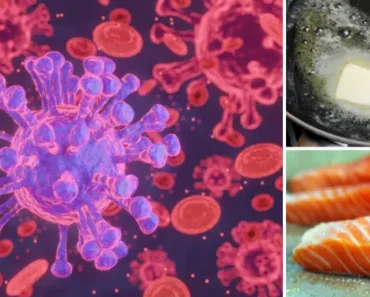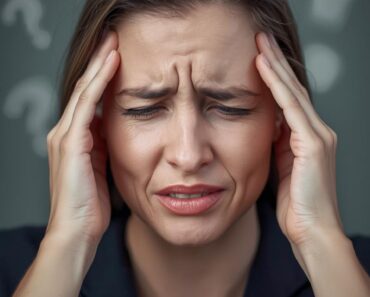Your feet do far more than carry you through the day – they’re also a powerful gateway to pain relief and healing throughout your body.
In traditional reflexology and acupressure, specific points on the feet are believed to be energetically connected to organs, muscles, and joints.
By stimulating these points, you can release tension, improve circulation, and reduce pain – especially in the back and knees.
The Healing Science Behind Foot Pressure Points
Reflexology and acupressure are ancient healing techniques rooted in Traditional Chinese Medicine (TCM).
They are based on the principle that the body’s energy (known as Qi or Chi) flows through specific meridians – invisible pathways that connect every organ and muscle group.
When this energy becomes blocked or imbalanced, pain and illness can occur. Applying pressure to key points along these meridians helps restore balance, release muscular tension, and promote natural healing.
Your feet are especially powerful in this regard because they contain:
- Over 7,000 nerve endings,
- Dozens of acupressure and reflexology zones,
- Direct connections to your spine, knees, and internal organs.
In essence, when you massage or stimulate certain parts of your feet, you’re not just easing tired soles – you’re sending signals through your nervous system that can relax and heal the entire body.
How Foot Pressure Points Help Relieve Back and Knee Pain
Back and knee pain often stem from muscle stiffness, inflammation, poor circulation, or nerve compression.
By stimulating reflex points on the feet that correspond to these areas, you can:
- Reduce inflammation and tension in surrounding tissues.
- Improve blood flow to the lower body and spine.
- Activate the parasympathetic nervous system, promoting relaxation and natural pain relief.
- Encourage the release of endorphins, your body’s feel-good hormones.
Many people who practice foot reflexology regularly report that it:
- Loosens tight lower back muscles.
- Reduces stiffness in the knees and hips.
- Relieves sciatica pain.
- Improves posture and joint mobility.
The key is learning which pressure points to target – and how to use them correctly.
Understanding Reflex Zones on the Foot
Before diving into the specific points, it helps to visualize how your feet map to the rest of your body.
- Toes correspond to your head and neck.
- Ball of the foot connects to the chest and upper back.
- Arch area links to your spine, stomach, and lower back.
- Heel relates to your pelvis, hips, and sciatic nerve.
So, if you’re dealing with back pain, you’ll focus on the inner edge and arch of your foot – which mirrors your spine.
If you’re targeting knee pain, you’ll focus on the upper heel and lower arch, which connect to your knees and lower joints.
Let’s go step-by-step through the main pressure points for each.
Pressure Points on the Foot for Back Pain Relief
Lower back pain is one of the most common types of discomfort, often caused by muscle strain, tension, or poor posture.
Reflexology can help ease that pain by focusing on the foot’s spinal reflex zone and other key points related to back support.
1. The Spinal Reflex Line (Inner Edge of the Foot)
This is the main area to focus on for back pain relief. The inner arch of your foot – running from the heel to the big toe – corresponds directly to your spine.
How to Find It:
Sit comfortably and place one foot across your knee.
- The base of your big toe represents your neck and upper back.
- The middle of the arch reflects your mid-back and lumbar spine.
- The heel area mirrors your lower back and sacrum.
How to Stimulate:
- Using your thumb, apply firm pressure along the inner edge of the foot in small circular motions.
- Start from the heel and move upward to the base of the big toe.
- Repeat the motion 3–5 times on each foot, focusing longer on tight or tender spots.
Benefits:
This technique helps release spinal tension, ease stiffness, and improve nerve flow from the lower back down the legs.
2. The Heel Point (Lower Back and Sciatica Relief)
The heel represents the pelvic region and lower spine, making it especially useful for relieving sciatica and chronic lumbar pain.
How to Stimulate:
- Hold the heel with both hands and use your thumbs to press deeply into the center.
- Massage in small circular motions for 2–3 minutes per heel.
- You can also roll your heel over a tennis ball for deeper stimulation.
Benefits:
This releases tension in the sacrum and gluteal region, easing radiating back pain and stiffness.
3. The Outer Edge of the Sole (Muscle Support)
The outer side of your foot corresponds to muscles that stabilize your spine. Massaging this area can improve flexibility and reduce tension that contributes to back discomfort.
How to Stimulate:
- Use your knuckles or thumb to press along the outer side from the base of the pinky toe down to the heel.
- Move slowly, applying steady pressure for 2–4 minutes.
Benefits:
Encourages muscle relaxation and better spinal alignment.
Pressure Points on the Foot for Knee Pain Relief
Knee pain can result from arthritis, injury, overuse, or inflammation. Reflexology can help by stimulating zones that correspond to the knees, hips, and lower joints – primarily located in the heel and arch areas.
1. The Knee Reflex Point (Upper Arch)
The knee reflex zone is found slightly above the center of the foot arch, near the ball of the foot – roughly where your arch begins to curve upward.
How to Stimulate:
- Using your thumb or a reflexology stick, press into this area with circular motions.
- Focus on any sore or tight spots and massage for 2–3 minutes per foot.
Benefits:
Promotes joint flexibility, reduces stiffness, and encourages fluid movement in the knee area.
2. The Heel Edge (Hips and Joints)
The upper heel area corresponds to the hips and major joint connections that affect knee stability.
How to Stimulate:
- Use both thumbs to press firmly into the upper heel just below the arch.
- Work across the heel horizontally, then vertically.
- Massage each foot for 3–5 minutes.
Benefits:
Helps realign the lower body, supports proper joint function, and reduces pain from hip or knee imbalance.
3. The Top of the Foot (Energy Flow Point)
Though not a reflexology point per se, acupressure points located between the tendons on the top of the foot can also reduce knee discomfort.
Key Point: LV3 (Liver 3 or Tai Chong Point)
Located between the big toe and second toe, about two finger-widths back from the webbing.
How to Stimulate:
- Use your thumb to press into this spot until you feel slight tenderness.
- Hold for 30–60 seconds, then release.
- Repeat 2–3 times per session.
Benefits:
Relieves inflammation, improves circulation, and helps balance the body’s energy flow – particularly in the legs and knees.
How to Perform a Simple Foot Reflexology Routine for Back and Knee Pain
Here’s a 10-minute self-massage routine you can do daily to relieve pain naturally:
Soak Your Feet: Begin by soaking your feet in warm water with Epsom salt for 10 minutes to soften the skin and relax muscles.
Warm Up: Use your palms to gently rub your entire foot, stimulating circulation.
Focus on Reflex Zones:
- Press along the spinal reflex line on the inner arch.
- Massage the heel deeply to target the lower back and pelvic region.
- Move up to the knee reflex zone in the upper arch.
Add Circular Pressure: Apply slow, circular pressure to each point for about one minute. If you feel slight tenderness, stay there – that means you’ve found an active point.
Finish with Stretching: Flex and point your toes several times, roll your ankles, and take a few deep breaths to ground your energy.
Repeat Daily or Every Other Day: Consistency is key for long-term relief.
Tips for Best Results
- Use oil or lotion: Coconut, olive, or sesame oil makes massage smoother and nourishes your skin.
- Apply firm but comfortable pressure: Pain isn’t necessary; mild soreness is normal.
- Breathe deeply: Slow breathing enhances the relaxation response.
- Massage both feet: Even if pain is one-sided, the body’s energy pathways are connected bilaterally.
- Combine with stretching: Gentle back or leg stretches afterward enhance the benefits.
If you suffer from chronic or severe pain, you can also combine this technique with Epsom salt baths, magnesium supplementation, or yoga-based movement therapy for faster recovery.
Additional Reflex Points to Support Pain Relief
While the main focus is on the spine and knee zones, a few extra foot points can enhance overall pain relief and healing:
Solar Plexus Point
Located just below the ball of the foot in the center. Pressing here calms the nervous system and reduces stress, which often intensifies back pain.
Adrenal Gland Point
Found near the center of the arch. Stimulating this point can reduce inflammation and improve your body’s stress response.
Kidney Point
Located near the inner arch, just below the ball of the foot. Pressing here helps with detoxification and supports joint recovery.
Working on these points together encourages a holistic healing effect – soothing not only your back and knees but your whole body.
When to See a Professional
Reflexology and acupressure can be highly effective for mild to moderate pain, but if you have:
- Severe or persistent back or knee pain,
- Swelling, redness, or immobility in joints,
- A diagnosed spinal or knee condition (like herniated disc or arthritis),
…it’s best to consult a licensed medical professional or physical therapist.
You can also visit a certified reflexologist or acupressure therapist for a targeted, full-body session, which often provides deeper and longer-lasting relief.
Applying pressure to specific points on your feet is one of the simplest, most natural ways to relieve back and knee pain without medication or complicated therapy.






